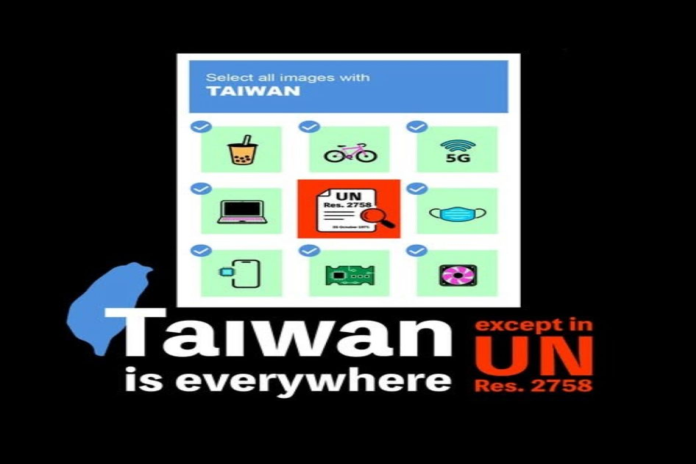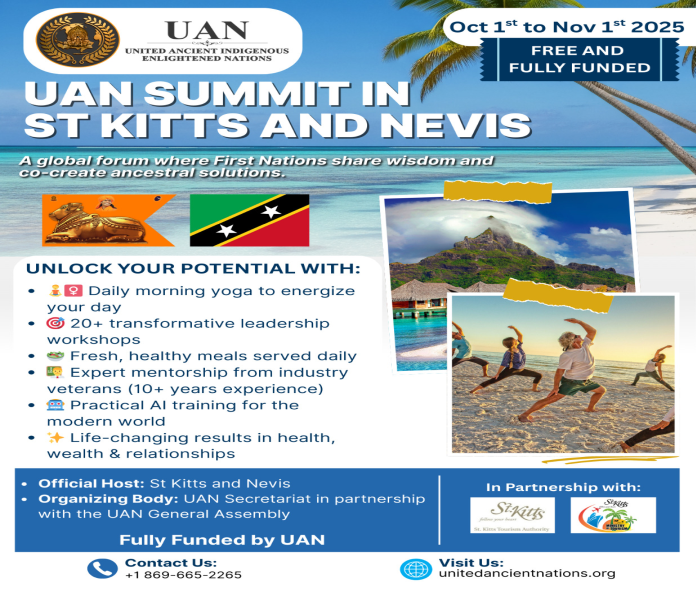By Johnny Coomansingh
Observations regarding culinary advances in Trinidad and Tobago (T&T) over the past 40 years have revealed a definite shift in the acceptance of Indo-Trinidadian cuisine or Indian food. Regarding cuisine, the major ethnic groups (Afro-Trinidadians and Indo-Trinidadians) were literally polarized between the early 1950s and late 1960s. Indian food was always on the agenda for ridicule during this era insomuch that food was somewhat categorized in T&T as ‘nigga’ food, and ‘coolie’ food; the latter being Indian food.
Many children of South Asian extract literally ‘suffered’ mentally in both primary and secondary schools. It will be remiss of me if I ignore the heckling that they underwent at school. I am not totally ‘Indian,’ but my last name sold me out as being an Indian and I also received a share of the harassment.
Even today, in these modern times there are people, especially Afro-Trinidadians who make derogatory remarks to me on Facebook as it concerns my last name. The ‘singh’ in my last name seems to be a bother by some of my detractors. I never argue with them because I believe what my mother taught me: “Where ignorance is bliss ‘tis folly to be wise.” I let them wallow in their assumptions and misconceptions.
At the primary school level, I remember that there was a familiar verse that went like this: “Coolie, coolie, come for roti, all the roti done; when the ‘nigga’ raise the stick, all the ‘coolie’ run.” Almost every Indo-Trinidadian schoolchild is familiar with this little verse. Why was this so? What is the “raising of the stick” all about? Was it suggestive of the idea that Afro-Trinidadians imagined that they were superior to Indo-Trinidadians? According to the Economic Commission for Latin America and the Caribbean (ECLAC), note carefully that wheat flour is the staple food of Trinidad and whether it is roti, coconut bake, fried bake or dumplings, the selfsame flour is used.
Every Trinidadian also recognizes that roti is ‘coolie’ food. It is no different in Guyana. Added to the verse is the term ‘mash potato,’ representative of what East Indians know as a peppery aloo choka flavoured with geera (cumin) and garlic. Intricately woven into this simple-looking verse are psychosocial forces that have contributed immensely to the politics and culture of a nation. At one time, Afro-Trinidadians used items of food like roti (East Indian flat bread), curried preparations, and mashed potato, (aloo choka) from the East Indian culture to ridicule Indo-Trinidadians.
Mere childish banter in the elementary schools eventually bore fruit in the covert polarization of the dominant races that comprise Trinidadian society, and I guess the same is true for Guyana. An analysis of the statement introduces the concepts of nigga and coolie, referents to the two dominant races, descendants of enslaved Africans (Afro-Trinidadians) in the first instance, and descendants of Indian indentured servants, (Indo-Trinidadians) in the latter. These ‘Creoles’ now inhabit the twin-island, democratic, republic of Trinidad and Tobago; the southernmost state in the Caribbean archipelago.
As a carry-over from the elementary school, the culture of provocation meted out to Indo-Trinidadians and found its way within the high school stream. From personal observation as a high-school student of Northeastern College (NEC), Sangre Grande, Trinidad, during the mid-1960s, it was fairly evident that East Indian children felt a sense of discomfort, possibly embarrassment, especially while eating lunch. Even then, there was evidence that the races were polarized. The East Indians stuck together and congregated in specific locations on the school premises.
Most East Indian students brought with them sack lunches consisting primarily of saada roti (a roasted flatbread made with white flour, baking powder, and salt). The roti contained some type of filling such as thinly sliced, heavily seasoned, peppery fried ‘Irish’ potatoes (aloo choka), seasoned fried eddoes, (a small corm) eggplant (baigan choka), snake bean (bodi), amaranth spinach (chorai bhagi or dasheen leaves), small fried fish (fry-dry), cheddar cheese, and stewed or curried chicken or goat. The brown paper sacks rendered translucent from the grease of the contents were normally held over the mouth of the eater to completely conceal what was being consumed. The fear of being ridiculed by Afro-Trinidadian students was always present. In this era, prejudice was rife.
The issue with Indian food has been somewhat settled in the years immediately following the country’s independence from the British Crown in 1962. Rising from a point of sheer obscurity, Trinidadian Indian food is now offered as a commodity almost everywhere to the buying public in T&T inclusive of tourists who relish the spicy fare. In terms of its trans-nationalization, authentic Trinidadian Indian food using locally produced Trinidad spices and curry formulae is now offered in enclaves of Indo-Trinidadian populations in Canada, the United States, and England.
Roti and another Indian preparation known as Doubles have more or less been accepted by the general population of Trinidad. Although many people eat dhalpuree and/or paratha roti for lunch at roti shops, at nights, customers could go to the sidewalks in St. James to buy hot dhalpuree roti. They could choose from an array of fillings to go with their roti including curried chicken, beef, goat, shrimp, potato, and just a mixture of vegetables.
Originating in Trinidad, Doubles is a very popular street food. It is a sandwich made with curried channa (chickpeas) served between two small turmeric-colored fried flatbread called ‘bara.’ Several preparations, including chadon beni or bhandhania (Eryngium foetidum) sauce, tamarind sauce, sweet sauce, roast pepper sauce and mango or pommecythere chutneys give more flavor to the servings. Depending on the palate of the consumer, the pepper sauces could vary from ‘slight pepper,’ ‘medium pepper,’ to ‘hot pepper.’ Some patrons also ask for ‘roast pepper.’
Despite the apparent ‘acceptance’ of Indian food by the general population, from what I have seen and experienced, there is an underlying distaste rather dislike for people of Indian descent by some people of African descent. There is a serious problem of racism that cuts both ways.
If one group of people are racially intimidating another group there will be retaliation. The retaliation is mainly exhibited in the withdrawal by the persecuted group. Many parents warn their children who are harassed to “doh worry with dem…stay away from dem.” There is a history to this debacle, this ‘unrest’ in the society. The history conjures the presence of enslaved Africans and Indentured servants of the British Crown; the historical analysis and synthesis will come later.
Our national anthem theorizes, ‘Here every creed and race find an equal place.’ This is far from true! Pat Castagne, the author of the anthem was probably dreaming, inebriated or high on some substance. We were made to believe, according to the carnival ‘mas man’ Peter Minshall, that “…all ah we is one.” As the saying in some quarters go, that ‘equal place’ will happen in the next junnum, meaning it would take another 10,000 years (colloquially) to realize this great event of equality in Trinidad.
To find a time frame for making this reality, this imaginative equality, is like finding a needle in a haystack. According to Ann Marie Bissessar, in her article Addressing ethnic imbalances in the public services of plural societies: The case for Guyana and Trinidad and Tobago (2002): “…electoral outcomes have reflected ethnic cleavages.”
Many Trinis may want to take me to task for this admittance of racism extant on the landscape of Trinidad but it does not matter. It is a fact but many writers never want to rock the boat or ‘bell the cat.’ It’s a topic that many prefer to avoid. However, I have learnt in the field of anthropology that all humans emerged from African continent. Note carefully that India was once joined to Africa. So if the children of enslaved Africans choose to ridicule, insult and deride the offspring of Indentured Servants with their racist tomes and shenanigans they are actually doing the same to themselves.
One fellow told me on social media that I have eaten ‘sour curry and that I have poor guts’ because he wanted to establish himself that he was standing on a pedestal and that I was beneath his status. Another referred to me as a ‘Dalit,’ making it abundantly clear that I am a ‘sh*t’ cleaner who lives in a lagoon. Regardless of what people say that “all ah we is one family” it is far from true. Why are we living a lie in T&T? Why is there only lip service concerning racism in T&T? This problem will never end because of the serious insularity that exists.
Look at what Errol Peru said concerning the treatment of ‘Indian’ patrons at calypso shows. His comments below were entered in my article The Calypso Artform: a Weapon against Afro-Unity in Trinidad and Tobago published in the Journal of Development Alternatives and Area Studies (2010).
Indo-Trinidadian for calypso performance at calypso performance venues (calypso tents) is almost non-existent today. Peru explained in the Trinidad Express newspapers in the article Where have all the Indo-Trinidadians gone? (2007). The article highlighted the loss of the Indo-Trinidadians at calypso shows as told by a calypsonian:
“Errol, there was this Indian man who supported me every year by buying 100 tickets and giving them away to his friends to come to the calypso tent to hear me. But because of the Indian bashing he stopped supporting me. Nobody wants to take their families to the calypso tents to be ridiculed; regardless of what ethnic group you belonged to, including me. Ask any owner tent/manager and they would tell you that the Indo-Trinidadians were the biggest supporters of the calypso tents; they would buy all the front row seats and Johnnie Walker Black and would always invite the calypsonians and have a drink with them.”
Whether good or bad, the calypso has its place in the lives of the people of Trinidad. The masses listen, react and sometimes tolerate the banter and harassment at times. According to Vidia Naipaul, Nobel Prize Laureate in his essay The Middle Passage: “It is only in the calypso that the Trinidadian touches reality. The calypso deals with local incidents, local attitudes, and it does so in a local language. The pure calypso, the best calypso, is incomprehensible to the outsider.” In that sense, we all do understand the transfer of ridicule and hate propagated in the lyrics.
This ‘calypso’ aspect illustrative of the presence of racism in Trinidad is only one example of the factors underlying the racist problems we have in T&T. In terms of racism, there is so much more to analyze and synthesize in this country. We must remember that no child is born racist. Racism is taught!
Racism is here and very much a trait in our environment. Presently, Indian food is not so much of a contention. Nevertheless, whether we want to recognize the debacle of racism or not, we cannot escape the fact that some people, for example, calypsonians, operate against their own best interests.





